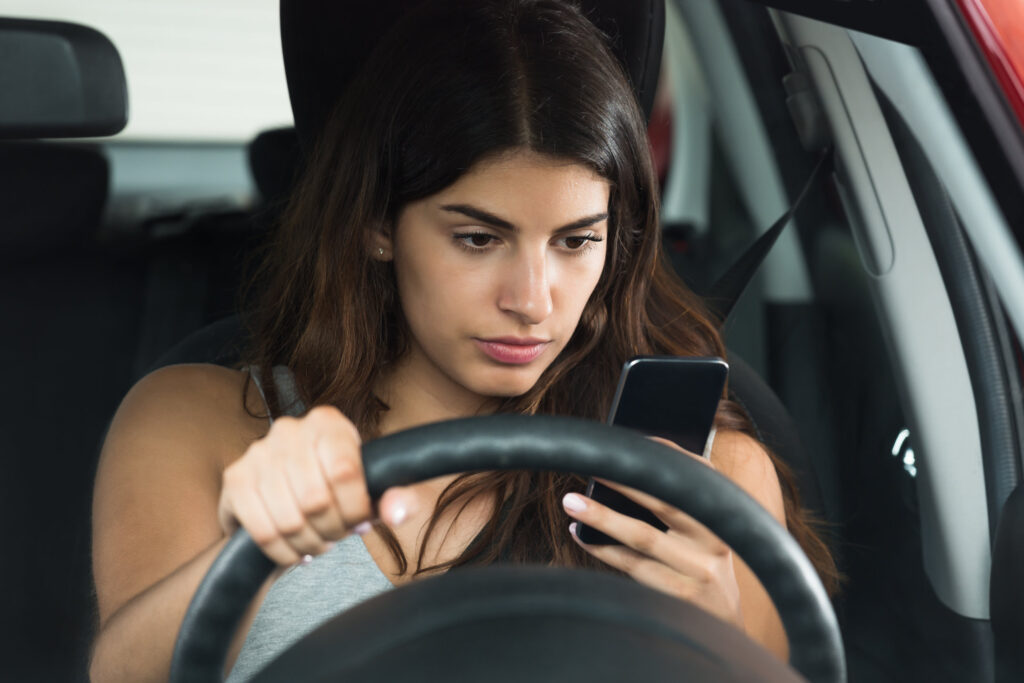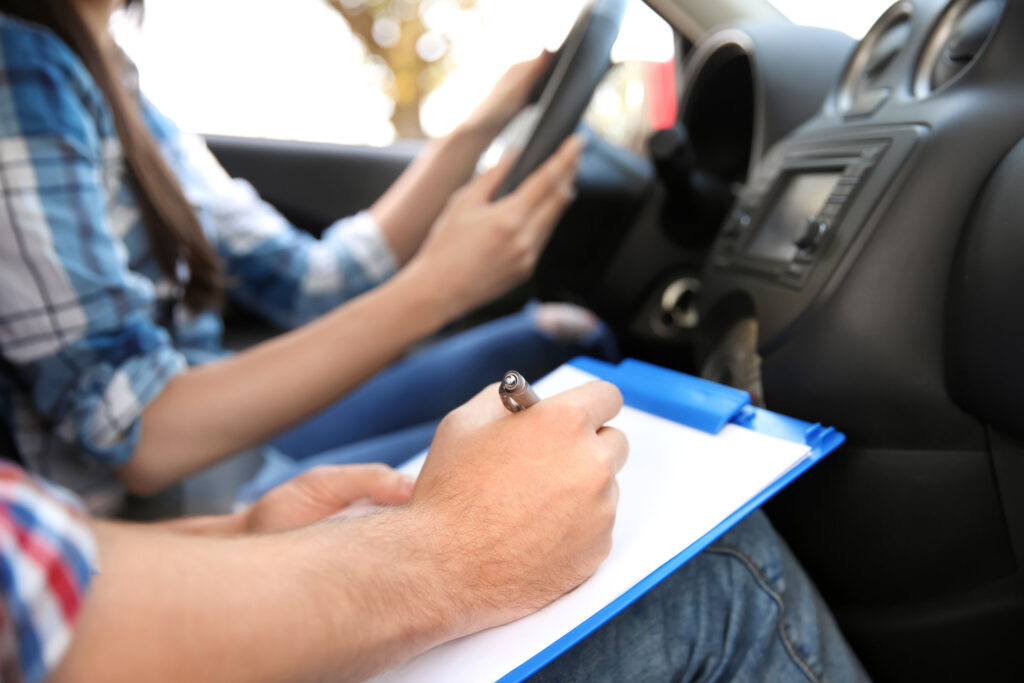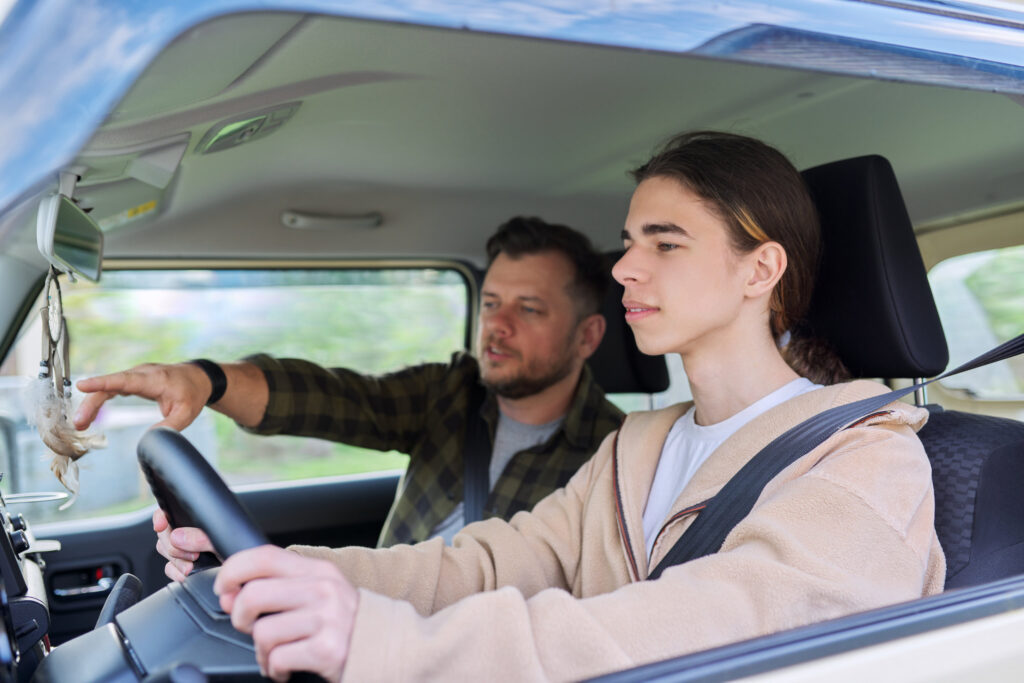
According to the Centers for Disease Control and Prevention (CDC), accidents were the leading cause of death for young people between the ages of 15 and 19 in 2019. Needless to say, this may make you a little nervous when your teenager starts driving. Before you hand over the keys, it’s important to talk to your children about risks they’ll face behind the wheel and common mistakes that can lead to car accidents. Since National Teen Driver Safety Week is October 17 – October 23, 2021, now is the ideal time to take an active role in your child’s driver education. Learn more about teen driving safety from the Las Vegas personal injury lawyers at Lerner and Rowe Injury Attorneys.
Teenage Driving Statistics
Between 2015 and 2019, the Nevada Traffic Safety Department reported 161 fatal crashes involving young drivers. Although teen drivers make up just 5% of Nevada drivers, they represent 10.6% of those involved in accidents. And it’s not just Nevada—according to the National Highway Traffic Safety Administration (NHTSA), teenagers are twice as likely to get into fatal car wrecks than adults.
Immaturity and driver inexperience are primary factors that contribute to deadly crashes. Other teen driving safety concerns include:
- Distracted driving
- Not wearing a seat belt
- Reckless or risky driving habits
- Nighttime driving
- Drowsy driving
- Impaired driving
All teens are likely to make some mistakes, but the risk of being in a crash is highest during their first year of driving. Parents and caregivers can help prevent teen car accidents by discussing and implementing proper technique and safety practices with new drivers.
Common Teen Driving Mistakes
Inexperience is often the number one culprit in teen car accidents and injuries. Mistakes like overcorrecting can make a dangerous situation worse. Avoiding these mistakes requires emergency handling skills that only develop with more time behind the wheel. As teens gain more experience, they learn to anticipate changes in traffic patterns and defensive driving becomes second nature.
Some errors in judgment, however, simply boil down to poor choices. This includes behaviors like driving under the influence of drugs or alcohol, driving while very tired, or engaging in risky behavior like texting and driving or speeding.
Distracted Driving
Distracted driving affects drivers of all ages, but teenagers are particularly vulnerable. The CDC found that about 8% of drivers ages 15 to 19 who were involved in a fatal motor vehicle accident in 2018 were distracted, more than any other age group.

Texting and talking on the phone are the biggest sources of distracted driving. Other distractions include eating, drinking, messing with the radio, talking to passengers, putting on makeup, or anything that takes your eyes off the road and your attention away from driving.
In Nevada, texting, accessing the Internet, or using handheld cell phones while driving is illegal. Making sure that your children understand the importance of focusing on the road is a crucial aspect of teen driving safety.
Riding with Friends in the Car
Besides being a distraction, teens driving with teenage friends in the car may cause them to drive more aggressively than they normally would. Teen drivers are also 2.5 times more likely to engage in risky behaviors while driving with one of their peers (3 times more likely when driving with multiple passengers). Research also shows fatal crash risk increases in direct relation to the number of teenagers in the car.
Riding Without a Seat Belt
Seat belts save lives and play a critical role in reducing injury severity. Unfortunately, seat belt use is lowest among teen drivers. Historically, the majority of teens involved in fatal crashes are riding unbuckled. Of the teen drivers who died in car accidents in 2019, at least 45% were not wearing their seat belt at the time of the crash. Teens may choose not to wear a seat belt because they feel they are invincible, because their friends don’t, or because they mistakenly believe they have a choice. In truth, wearing a seat belt is required by law. Getting caught not wearing one will result in a $25 fine in Nevada.
Risky Driving Habits
Reckless driving includes many poor driving choices, such as speeding. While speeding is a big risk for any driver, inexperienced drivers often have a tougher time judging speed and how long it takes to stop. Unfortunately, as teens gain confidence driving, their risky speeding behavior often increases.
In fact, speeding was a factor in 27% of the fatal crashes involving teen drivers in 2019. Although teen driving safety begins with a thorough knowledge of the rules of the road, applying them and exercising safe driving habits is equally important.
Driving at Night
Although not always avoidable, nighttime driving can pose additional risks to teen drivers. Night driving increases crash risk for all drivers, but that risk is even higher for inexperienced drivers who must contend with reduced visibility. With less time to see and react to changing road conditions, teens may be more likely to be involved in a serious traffic accident after dark.
Nevada Teen Driving Laws

To help combat inexperience and teen driving mistakes, Nevada enacted Graduated Driver Licensing laws to give teen drivers more time to learn complex driving skills under less risky circumstances.
Some Nevada teen driving laws and restrictions include:
- New drivers under 18 must complete a driver’s education course.
- Drivers may obtain an instruction or learner’s permit beginning at 15.5 years of age only after passing a knowledge test with a score of 80% or better.
- Permitted drivers must drive with a licensed driver (21 or older with at least one year of driving experience) seated next to them at all times.
- Permitted drivers must complete 50 hours of supervised behind-the-wheel experience with 10 hours completed after dark.
- Proof of required 50 hours of experience must be submitted via the RoadReady app or form DLD-130.
- At age 16, permitted drivers holding a valid permit for at least six months may apply for a full license if they have not had any moving violations, at-fault crashes, or alcohol/drug convictions in the six months prior to applying.
- To obtain a license, teen drivers must pass a skills test in a properly registered and insured motor vehicle.
Once a teen receives their new license, they are still held to the following driving restrictions:
- Teen drivers may not transport passengers under 18 years old who are not immediate family for the first six months of licensure.
- New teen drivers cannot drive between 10:00 p.m. and 5:00 a.m. unless it is for work or a school event. This restriction lasts until age 18.
- Any detectable amount of a controlled substance or a blood alcohol content of .02 or higher, if you are under 21, will result in a DUI arrest.
- Teen driver’s licenses may be suspended for habitual truancy, firearms violations, and non-driving-related drug or alcohol convictions.
How Parents Can Promote Teen Driving Safety

Teenagers often see a driver’s license as a significant step toward adulthood, but it’s normal for parents to be nervous about letting their children get behind the wheel. Even if it seems like they aren’t listening, you are your children’s biggest influencer and your example is integral to them learning good teen driving safety habits. Get involved and share important tips to help them avoid car accidents and injuries. Teach them to be a better driver by:
- Providing a minimum of 30–50 hours of supervised driving practice over at least six months.
- Practicing on a variety of roads, at various times of day, and in various traffic and weather conditions.
- Practicing nighttime driving.
- Stressing the importance of constantly scanning for potential hazards, including other motorists, pedestrians, bicyclists, animals, and road debris.
- Limiting the number of teen passengers to one for at least the first six months of driving.
- Ensuring your teen is off the road by 10:00 p.m. until they turn 18.
- Requiring seat belt use on every trip.
- Not allowing any activities that take your teen’s attention away from driving, especially texting.
- Ensuring your teen always follows speed limits and adjusts their speed to match road and weather conditions.
- Being a good role model by never drinking and driving, and reinforcing this message with a Parent-Teen Driving Agreement.
In inclement weather, it is even more dangerous for young drivers to be on the road because of their inexperience handling vehicles in these situations. Teach your teen how to confidently handle weather challenges (like driving during monsoon season) and/or send them to a driving school to learn appropriate vehicle control techniques.
What to Do If Your Teen Is in an Accident
In a wreck? Need a check?™ If your teen has been injured in a car or motorcycle accident in Las Vegas, call the personal injury lawyers at Lerner and Rowe Injury Attorneys. Our Nevada attorneys bring extensive experience, skill, and compassion to car accident claims involving young drivers. We offer free initial consultations with no obligation to hire us, and we charge no legal fees until we win your case.
Our office is open Monday through Friday from 8:00 a.m. to 5:00 p.m., and our phone lines are open 24/7 at 702-877-1500. You can also connect with a representative online using our convenient LiveChat feature or fill out this form to be forwarded directly to our office.



